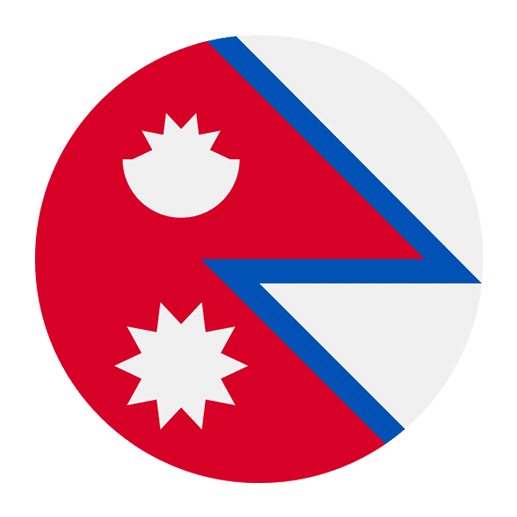The Nepali language, known for its rich and expressive nature, offers a diverse vocabulary that can help you describe the world around you in vivid detail. One of the fascinating aspects of learning Nepali is its extensive range of words for different textures. Whether you’re a beginner or an advanced learner, understanding these terms can significantly enhance your communication skills and appreciation of the language. In this article, we’ll explore various Nepali vocabulary words for different textures, helping you to describe objects, food, and even emotions more accurately.
Understanding Texture in Nepali
Texture refers to the feel, appearance, or consistency of a surface or substance. In Nepali, just like in English, there are specific words that describe various types of textures. These words can be used in different contexts, from describing the roughness of a rock to the softness of a fabric. Knowing these terms will not only make your conversations more engaging but also enrich your understanding of Nepali culture and daily life.
Basic Texture Vocabulary
Let’s start with some basic texture-related vocabulary in Nepali:
– **Soft**: नरम (Naram)
– **Hard**: कडा (Kadaa)
– **Smooth**: चिल्लो (Chillo)
– **Rough**: खरानी (Kharani)
– **Sticky**: चिप्लो (Chiplo)
– **Slippery**: चिप्लियो (Chipliyo)
– **Wet**: भिजेको (Bhijeko)
– **Dry**: सुक्खा (Sukkha)
These basic terms will serve as a foundation for describing various textures in different contexts.
Describing Textures in Daily Life
In everyday conversations, you might need to describe the texture of various objects and materials. Here are some common examples:
– **Clothing**: When talking about clothes, you might want to describe how they feel. For instance, a soft sweater can be described as नरम स्वेटर (Naram Swetar), while a rough jacket can be described as खरानी ज्याकेट (Kharani Jacket).
– **Food**: Describing food textures is essential, especially if you’re discussing your culinary preferences. A smooth pudding can be referred to as चिल्लो खिर (Chillo Kheer), and crispy snacks can be described as कुरकुरे (Kurkure).
– **Furniture**: When talking about furniture, you might describe a hard wooden chair as कडा काठको कुर्सी (Kadaa Kaathko Kursi) or a soft cushion as नरम तकिया (Naram Takiya).
Advanced Texture Vocabulary
For more advanced learners, understanding nuanced texture vocabulary can be particularly rewarding. Let’s dive into some specific and sophisticated texture-related terms:
Natural Textures
– **Grainy**: दाना भएको (Daana Bhayeko)
– **Gritty**: खुर्सानी (Khursani)
– **Pebbly**: कन्क्रे (Kankre)
– **Jagged**: दाँते भएको (Daante Bhayeko)
– **Velvety**: मखमली (Makhamali)
These words can be particularly useful when describing natural elements like soil, rocks, and plants. For example, a grainy texture of sand can be described as दाना भएको बालुवा (Daana Bhayeko Baaluwa), and a velvety petal can be referred to as मखमली पात (Makhamali Paat).
Textures in Food
Food texture is an essential aspect of culinary descriptions. Here are some advanced terms for describing food textures:
– **Crunchy**: कुरकुरे (Kurkure)
– **Chewy**: चबाउनुपर्ने (Chabaunupardne)
– **Creamy**: क्रीम भएको (Cream Bhayeko)
– **Flaky**: फ्लेक भएको (Flake Bhayeko)
– **Tender**: नरम (Naram)
These terms can help you describe your favorite dishes more precisely. For instance, a flaky pastry can be described as फ्लेक भएको पेस्ट्री (Flake Bhayeko Pastry), and a creamy dessert can be referred to as क्रीम भएको मिठाई (Cream Bhayeko Mithai).
Textures in Emotions
Interestingly, textures are also used metaphorically to describe emotions and feelings in Nepali. Here are some examples:
– **Tense**: तनावपूर्ण (Tanaavapurna)
– **Calm**: शान्त (Shaant)
– **Bumpy**: उतार-चढाव (Utaar-Chadhaav)
– **Smooth**: समतल (Samatala)
– **Rough**: खराब (Kharab)
These metaphorical uses of texture can add depth to your conversations about emotions. For example, describing a tense situation as तनावपूर्ण अवस्था (Tanaavapurna Avastha) or a smooth relationship as समतल सम्बन्ध (Samatala Sambandh) can make your expressions more vivid and relatable.
Using Texture Vocabulary in Sentences
To help you incorporate these texture words into your everyday conversations, let’s look at some example sentences:
1. **Soft**
– यो कम्बल धेरै नरम छ।
– Yo kambal dherai naram cha.
– This blanket is very soft.
2. **Hard**
– त्यो ढुंगा धेरै कडा छ।
– Tyo dhunga dherai kadaa cha.
– That rock is very hard.
3. **Smooth**
– यो चकलेटको सतह चिल्लो छ।
– Yo chocolateko satah chillo cha.
– The surface of this chocolate is smooth.
4. **Rough**
– यो सडक धेरै खरानी छ।
– Yo sadak dherai kharani cha.
– This road is very rough.
5. **Sticky**
– यो क्यान्डी चिप्लो छ।
– Yo candy chiplo cha.
– This candy is sticky.
6. **Slippery**
– यो बाटो चिप्लियो छ।
– Yo bato chipliyo cha.
– This path is slippery.
7. **Wet**
– उसको कपडा भिजेको छ।
– Usko kapada bhijeko cha.
– His clothes are wet.
8. **Dry**
– यो रोटी सुक्खा छ।
– Yo roti sukkha cha.
– This bread is dry.
Practice and Application
To effectively learn and remember these texture words, it’s essential to practice using them in various contexts. Here are some tips for incorporating texture vocabulary into your language practice:
1. **Descriptive Writing**: Try writing short paragraphs describing different objects around you using the new texture words you’ve learned. For instance, describe your favorite piece of clothing, a dish you recently enjoyed, or a place you visited.
2. **Conversation Practice**: Engage in conversations with native Nepali speakers or fellow learners, focusing on describing textures. You can discuss anything from the texture of your meals to the feel of different materials you encounter daily.
3. **Flashcards**: Create flashcards with the Nepali texture words on one side and their English translations on the other. Regularly review these flashcards to reinforce your memory.
4. **Real-Life Application**: Whenever you encounter an object or situation that can be described using one of the texture words, make a mental note of it and try to use the appropriate Nepali term. For example, when you touch a soft pillow, remind yourself that it’s नरम तकिया (Naram Takiya).
5. **Language Exchange**: If possible, join a language exchange group where you can practice speaking Nepali with native speakers. This will give you the opportunity to use texture vocabulary in real-life conversations and receive feedback on your usage.
Conclusion
Mastering the vocabulary for different textures in Nepali can greatly enhance your descriptive abilities and make your conversations more engaging. From basic terms like नरम (Naram) and कडा (Kadaa) to more advanced words like मखमली (Makhamali) and चबाउनुपर्ने (Chabaunupardne), these words will help you paint a vivid picture of the world around you.
Remember, the key to mastering any language is consistent practice and application. By incorporating these texture words into your daily conversations, writing, and language practice, you’ll become more fluent and confident in your Nepali communication skills. So, go ahead and start exploring the rich and varied world of Nepali textures!

